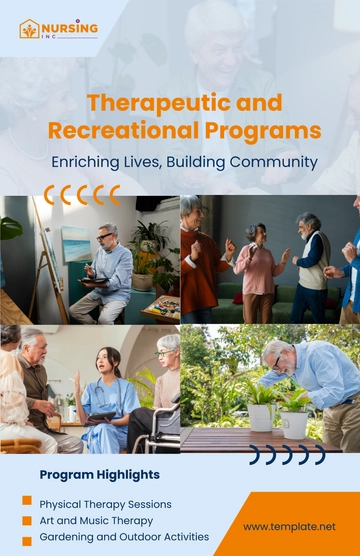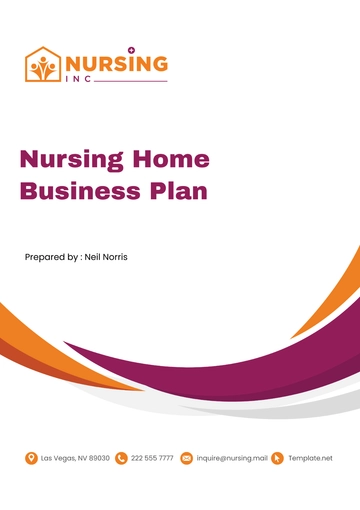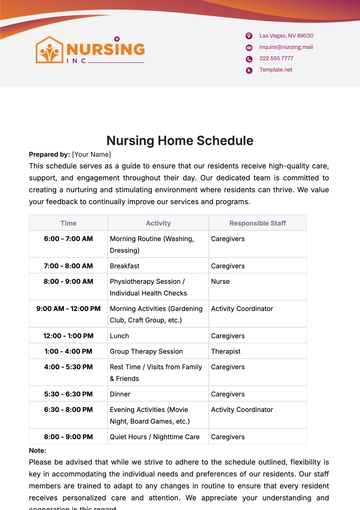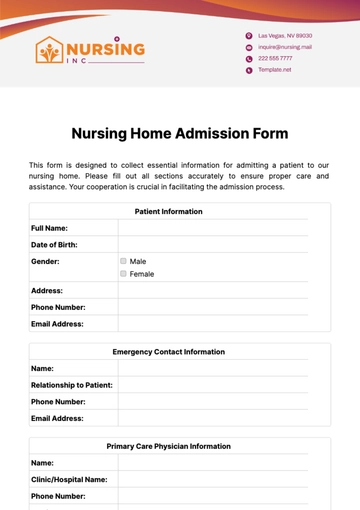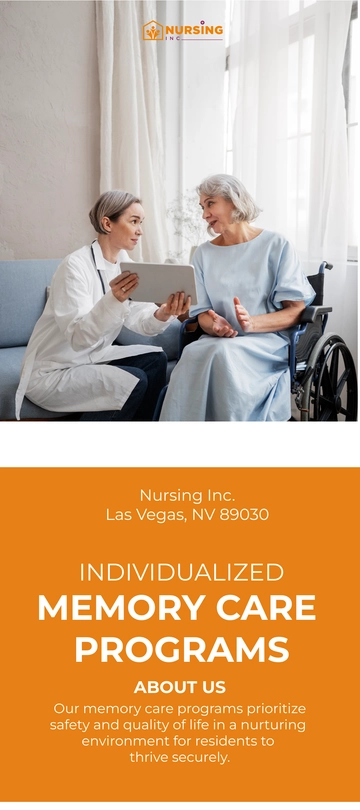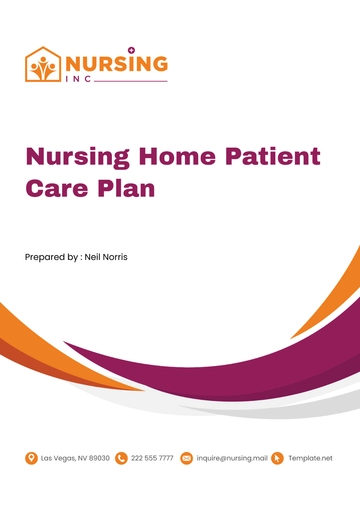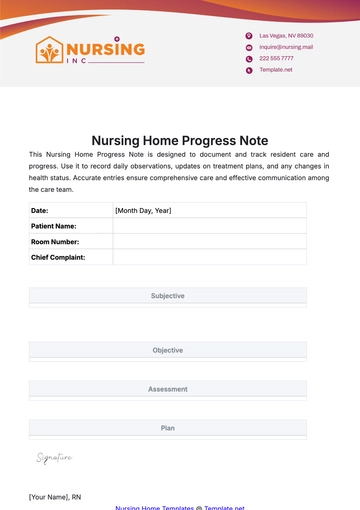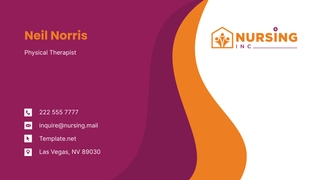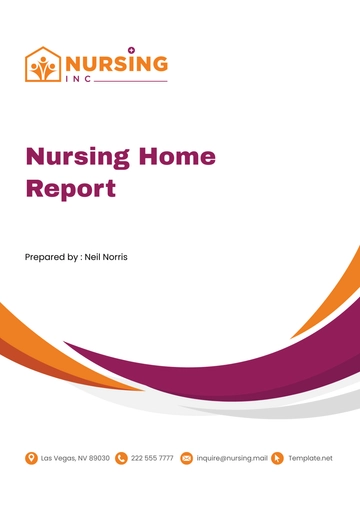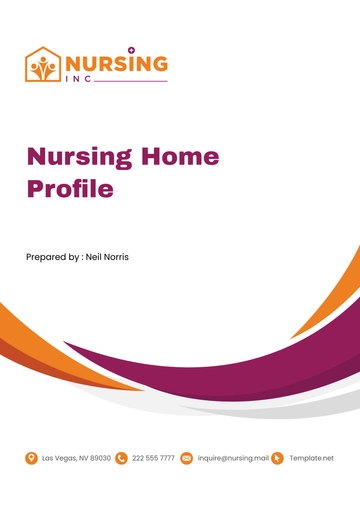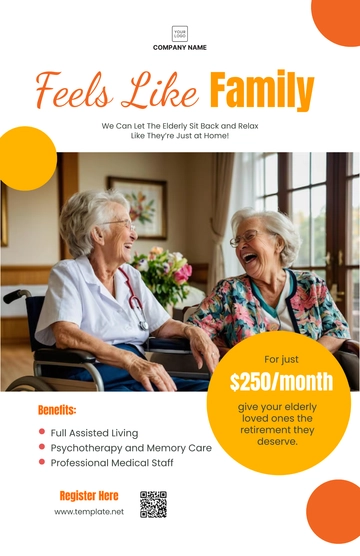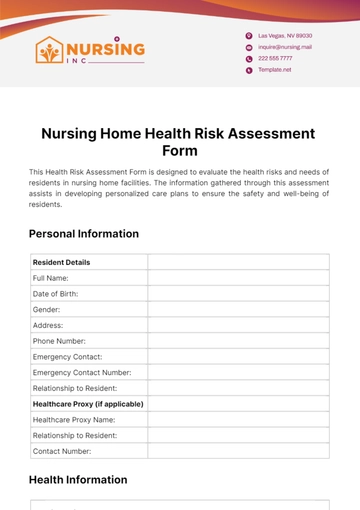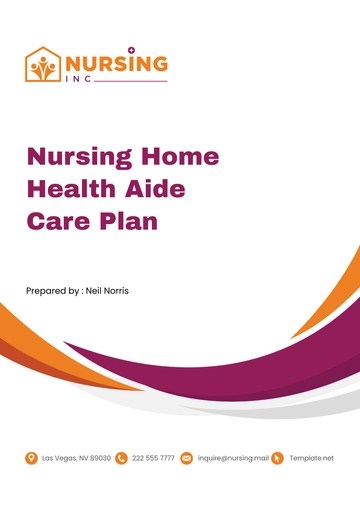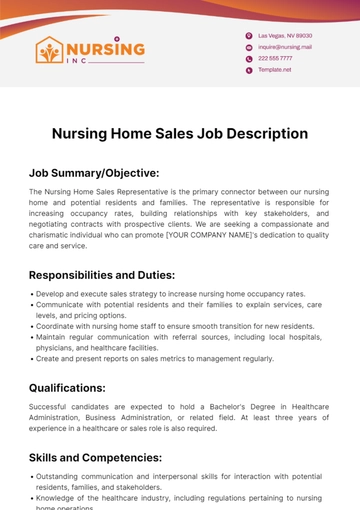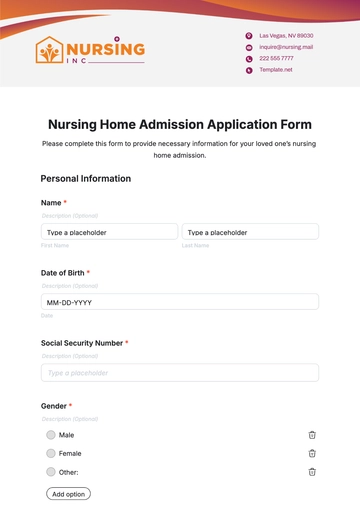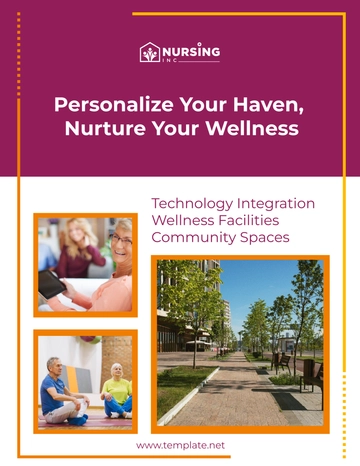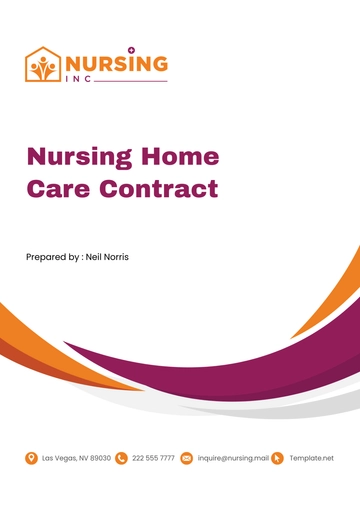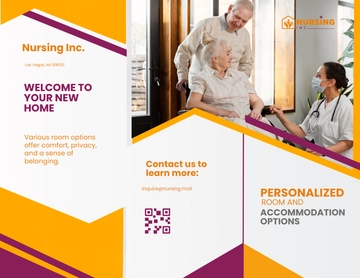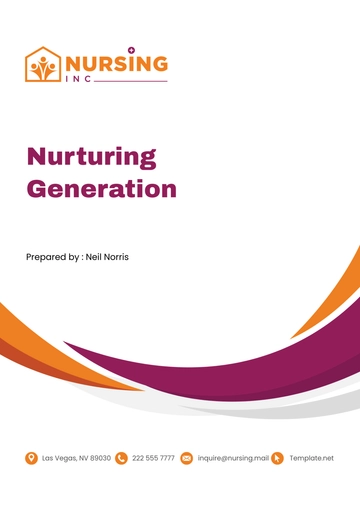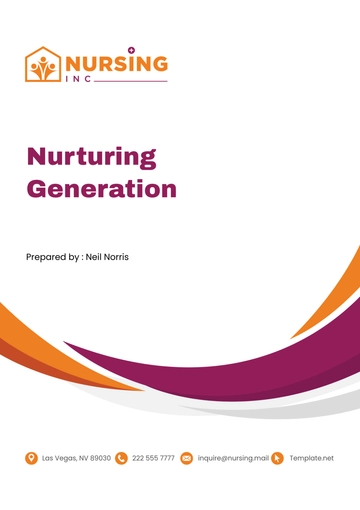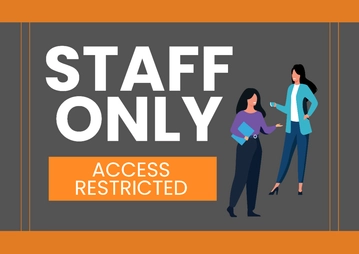Free Nursing Home Facility Staff Training Guide
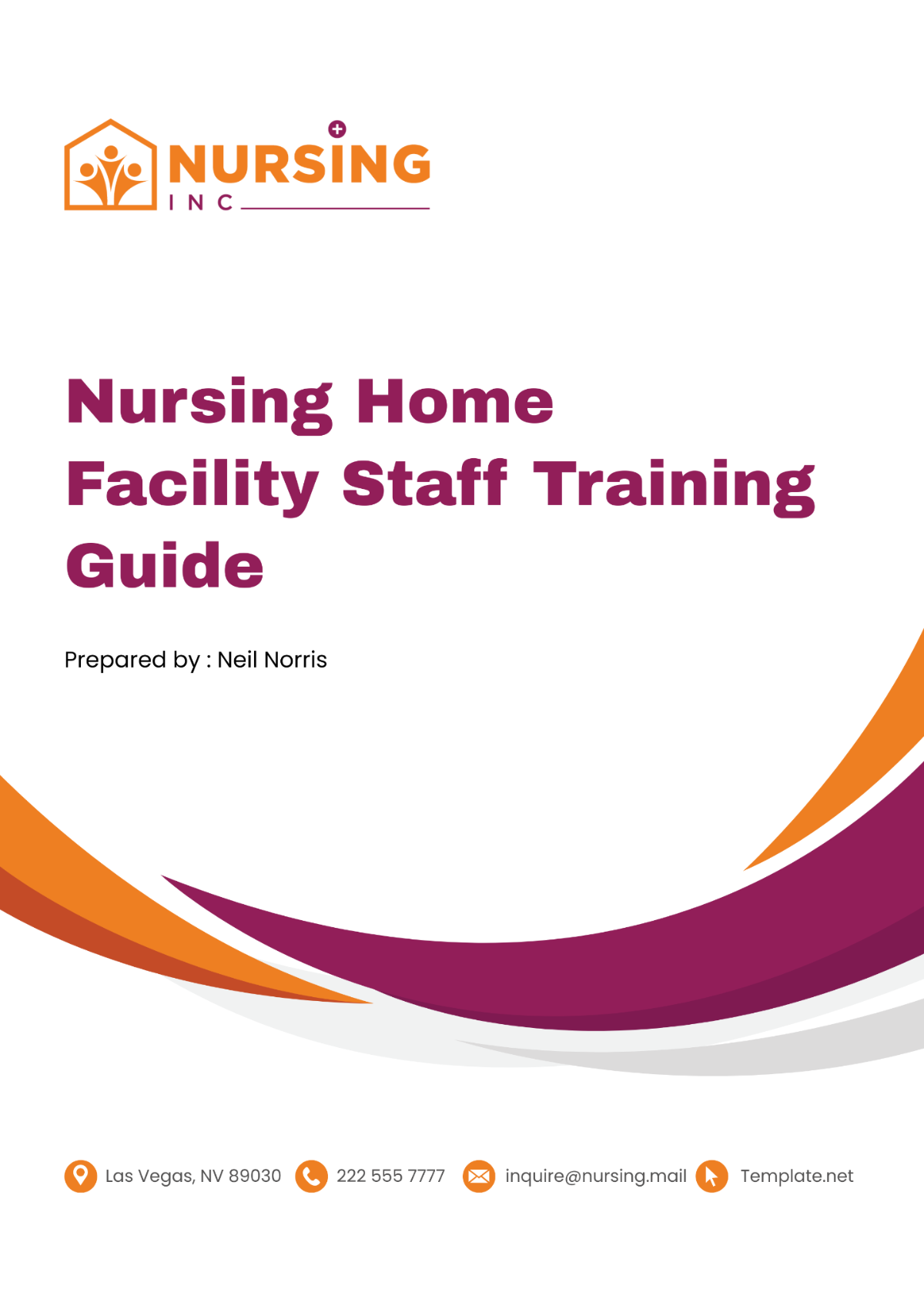
I. Introduction
As the individual currently serving in the role of Administrator at [Your Company Name], it gives me immense pleasure to present to you our all-encompassing training guide. The purpose of this training guide is to furnish our dedicated staff members with the requisite knowledge and expertise that is essential to provide superior and exceptional care to all of our residents. We consider this guide to be an indispensable resource as we seek to ensure that every single member of our team is thoroughly prepared and ready to cater to the varied and diverse needs and requirements of our residents. Simultaneously, it underscores our steadfast commitment to maintaining and upholding an exceptional standard of excellence.
II. Overview of the Nursing Home Facility
A. Mission and Values
At [Your Company Name], our mission is to provide compassionate, person-centered care that enhances the quality of life for our residents. Our values of respect, integrity, compassion, and excellence guide everything we do, from providing daily care to fostering a supportive community environment.
B. Organizational Structure
Our facility is organized into various departments, each with specific roles and responsibilities. The nursing department oversees resident care, medication management, and health assessments. Allied health professionals, such as physical therapists and occupational therapists, collaborate with nursing staff to support residents' rehabilitation needs. Support staff, including dietary aides, housekeeping personnel, and administrative staff, play crucial roles in maintaining the overall operation and efficiency of the facility.
C. Key Policies and Procedures
Our facility operates under a set of key policies and procedures designed to ensure the safety, well-being, and dignity of our residents. These policies cover areas such as resident rights, safety protocols, infection control measures, medication management guidelines, and quality improvement initiatives. By adhering to these policies, staff members can provide consistent and high-quality care to our residents while maintaining compliance with regulatory requirements.
III. Resident Rights and Responsibilities
As individuals who reside in our nursing home facility, there are certain rights and responsibilities that they inherently possess, and it is essential that these rights and responsibilities are respected and upheld without exception, at every moment. The rights that these individuals possess encompass:
A. Resident Rights
Residents have the right to privacy and dignity, including the confidentiality of their personal information and respect for their individual preferences and beliefs. They also have the right to autonomy and self-determination, which means they can make decisions about their care and lifestyle choices. Additionally, residents have the right to voice grievances and have them addressed promptly, without fear of retaliation.
B. Resident Responsibilities
Alongside their rights, residents also have responsibilities within the facility. These include treating staff and fellow residents with respect, following facility rules and regulations, and actively participating in their care planning and decision-making processes. By fulfilling these responsibilities, residents contribute to a harmonious and supportive community environment.
IV. Safety and Emergency Procedures
At [Your Company Name], the focal point of all our operations and activities is to ensure the safety and well-being of all our esteemed residents. We consider this responsibility of paramount importance and to help facilitate this commitment, we have taken significant steps towards the establishment and implementation of a comprehensive system of safety and emergency response procedures.
These procedures have been meticulously designed to not only mitigate any potential risks that could pose a threat to our residents, but also to map out swift and efficient actions to be undertaken in case an emergency scenario manifests. These procedures, we believe, will empower us to effectively handle any emergency situations that may arise, thus allowing us to prioritize and safeguard the interest, safety and well-being of our residents at all times.
A. Fire Safety and Evacuation Plans
Our fire safety and evacuation plans are regularly reviewed and practiced by staff members to ensure readiness in the event of an emergency. These plans include procedures for alerting staff and residents, evacuation routes, assembly points, and assignments of responsibilities during evacuations. Regular drills and training sessions are conducted to familiarize staff members with these procedures and ensure a swift and organized response in case of fire.
B. Emergency Response Protocols
In addition to fire safety, our facility has protocols in place for various emergency situations, including medical emergencies, severe weather events, and other crises. Staff members are trained to respond quickly and appropriately to medical emergencies, such as cardiac arrests or strokes, by initiating CPR and notifying emergency medical services. Similarly, procedures are in place for severe weather events, such as hurricanes or tornadoes, to ensure the safety and well-being of residents and staff.
C. Infection Control Measures
Our facility follows rigorous infection control measures to prevent the spread of infections and protect the health and safety of our residents and staff. These measures include promoting proper hand hygiene practices among staff members, ensuring the availability and appropriate use of personal protective equipment (PPE), and implementing thorough cleaning and disinfection protocols for high-touch surfaces and resident rooms. By adhering to these measures, we strive to maintain a safe and hygienic environment for all who reside and work within our facility.
V. Resident Care Protocols
At the company that bears our name, we take pride in ensuring that every single member of our staff undergoes rigorous training in various resident care protocols. This careful education process guarantees the highest level of service for every individual residing with us. We meticulously plan and provide personalized and compassionate care that is specifically tailored to cater to their distinct and unique needs.
The core aim of our services is not only to cover their basic requirements but also to pay heed to their personal preferences, thereby ensuring their complete comfort and satisfaction.
A. Activities of Daily Living (ADLs) Assistance
Staff members are trained to assist residents with activities of daily living, including bathing, dressing, grooming, toileting, and feeding. This assistance is provided with sensitivity and respect for each resident's preferences and abilities, promoting their independence and dignity.
B. Mobility and Transfers
To ensure the safety and comfort of residents, staff members receive training in proper techniques for assisting with resident mobility and transfers. This includes using assistive devices such as walkers or wheelchairs, as well as implementing proper body mechanics to prevent injuries to both residents and staff.
C. Skin Care and Pressure Ulcer Prevention
Staff members are educated on the importance of maintaining skin integrity and preventing pressure ulcers among residents. This includes regular skin assessments, repositioning residents to relieve pressure, and providing appropriate skincare interventions to promote skin health.
D. Pain Management
Our facility is dedicated to ensuring that residents receive adequate pain management to enhance their quality of life. Staff members are trained to assess pain levels, implement pain management interventions as prescribed by healthcare providers, and monitor residents for signs of pain or discomfort.
VI. Medication Management
The management of medication in a safe and effective manner is absolutely crucial to maintaining the health and well being of our residents. It's of utmost importance that we administer them with accuracy, to prevent any adverse drug reactions that might otherwise occur.
To make sure we achieve this, our staff members are put under stringent training processes. These rigorous trainings focus extensively on different procedures of medication administration. This further helps us ensure that we minimize risks, and serve our residents in the best way possible when it comes to their medication-related needs.
A. Medication Administration Procedures
Staff members are trained to follow strict protocols for medication administration, including verifying medication orders, properly identifying residents, administering medications via the correct route, and documenting medication administration accurately.
B. Proper Documentation and Record-Keeping
Accurate documentation of medication administration is vital to resident safety and regulatory compliance. Staff members are trained to maintain detailed medication administration records, including documenting the date, time, dose, route, and any relevant observations or interventions.
C. Identification and Reporting of Medication Errors
In the event of a medication error, staff members are trained to take immediate action to ensure resident safety. This includes notifying a supervisor or healthcare provider, documenting the error according to facility policies, and implementing corrective measures to prevent similar errors in the future.
VII. Communication Skills
Effective communication is essential to fostering positive relationships and promoting resident-centered care. Our staff members receive training in communication techniques to enhance their interactions with residents, families, and fellow staff members.
A. Effective Communication Techniques
Staff members are trained in active listening, empathy, and clear verbal and nonverbal communication skills to facilitate meaningful interactions with residents. This includes using open-ended questions, providing feedback, and acknowledging residents' concerns and preferences.
B. Communicating with Residents and Families
Staff members are encouraged to establish rapport with residents and their families to build trust and promote resident engagement in their care. This includes providing clear and accurate information about care plans, treatment options, and any changes in resident status.
C. Conflict Resolution Strategies
Our facility values diversity and strives to provide culturally competent care to residents from diverse backgrounds. Staff members receive training in cultural competence to recognize and respect cultural differences, communicate effectively across cultural barriers, and provide culturally sensitive care.
VIII. Abuse and Neglect Prevention
Protecting residents from abuse and neglect is a fundamental responsibility of our facility. Staff members are trained to recognize signs of abuse and neglect and take immediate action to ensure resident safety and well-being.
A. Recognizing Signs of Abuse and Neglect
Staff members are educated on the various forms of abuse and neglect, including physical, emotional, sexual, financial, and neglectful behaviors. They are trained to recognize signs such as unexplained injuries, changes in behavior, social withdrawal, and financial exploitation.
B. Reporting Procedures for Suspected Abuse or Neglect
In accordance with facility policies and regulatory requirements, staff members are mandated reporters of suspected abuse or neglect. They are trained to report concerns to a designated supervisor, administrator, or appropriate authorities promptly and accurately.
C. Promoting a Safe and Supportive Environment
Our facility fosters a culture of safety and support for residents, staff members, and visitors. Staff members are encouraged to maintain open communication, establish trusting relationships with residents, and advocate for resident rights and well-being.
IX. Quality Improvement and Compliance
Continuous quality improvement is central to our commitment to providing high-quality care and services to our residents. Our facility implements quality assurance measures and compliance initiatives to monitor and enhance the quality of care provided.
A. Quality Assurance Measures
Our facility conducts regular audits, assessments, and evaluations of resident care processes and outcomes to identify areas for improvement and implement corrective actions. Quality indicators such as resident satisfaction, clinical outcomes, and regulatory compliance are monitored closely to ensure ongoing quality improvement.
B. Continuous Quality Improvement Initiatives
Staff members are encouraged to participate in quality improvement initiatives and contribute ideas for enhancing resident care and services. Quality improvement teams are established to address specific areas of concern and implement evidence-based practices to achieve positive outcomes.
C. Compliance with Regulatory Requirements
Our facility maintains compliance with state and federal regulations governing nursing home operations and resident care. Staff members receive training on regulatory requirements relevant to their roles and responsibilities, and ongoing monitoring and auditing processes are in place to ensure compliance.
X. Professional Development and Training Resources
Our facility is committed to supporting the professional development and growth of our staff members. We provide a variety of training resources and opportunities to enhance their knowledge, skills, and competencies in providing care to residents.
A. Ongoing Staff Training Opportunities
Staff members have access to ongoing training and educational opportunities to stay updated on best practices, emerging trends, and regulatory changes in the healthcare industry. This may include in-service training sessions, online courses, conferences, and workshops.
B. Continuing Education Programs
Our facility supports staff members' pursuit of continuing education and advanced certifications in their respective fields. Financial assistance, study materials, and mentorship opportunities may be available to staff members seeking to further their education and professional development.
C. External Resources and Organizations
Staff members are encouraged to leverage external resources and organizations to enhance their knowledge and skills in specific areas of interest or expertise. Professional associations, educational institutions, and online forums may provide valuable resources, networking opportunities, and support for professional growth.
- 100% Customizable, free editor
- Access 1 Million+ Templates, photo’s & graphics
- Download or share as a template
- Click and replace photos, graphics, text, backgrounds
- Resize, crop, AI write & more
- Access advanced editor
Enhance staff competence with Template.net's Nursing Home Facility Staff Training Guide Template. This editable and customizable template offers a comprehensive framework for training staff in resident care, safety protocols, and communication skills. Utilize the AI Editor Tool to tailor content to your facility's needs. Elevate staff training efficiency and effectiveness with this versatile template.
